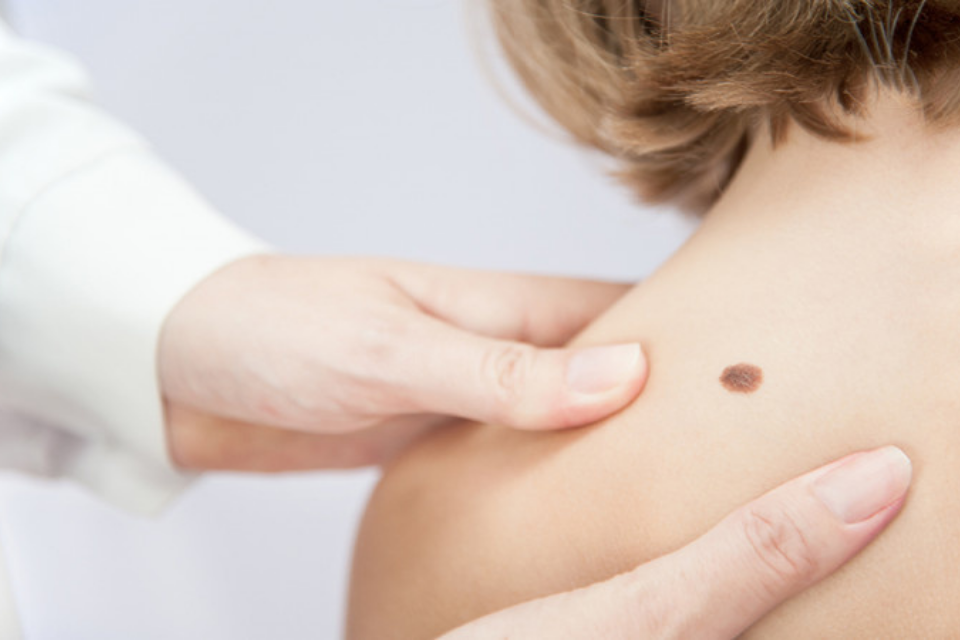 Birthmarks are part of, well, birth! Nearly 80 percent of all people have some kind of birthmark. Some of these disappear with age, some appear well after we are born, and many remain with us for as long as we choose to take them along for the ride. The first step in a decision of whether or not to remove a birthmark is accurate identification.
Birthmarks are part of, well, birth! Nearly 80 percent of all people have some kind of birthmark. Some of these disappear with age, some appear well after we are born, and many remain with us for as long as we choose to take them along for the ride. The first step in a decision of whether or not to remove a birthmark is accurate identification.
Birthmarks come in two main categories: vascular birthmarks and pigmented birthmarks.
Your vascular system involves your heart and the blood vessels that take your blood on the journey of your life as they move through every part of the body. When a collection of extra blood vessels divides and grows, they form a clump that becomes noticeable on the skin. That’s your vascular birthmark staring the world down. These can include:
These are ypically flat with a pink or salmon color to them. They do sometimes fade over time.
The two types are:
Best guess at pronouncing that? He-man-jee-O-muh — quite the mouthful. Often raised and usually bright red, these birthmarks occur all over the body, especially the face, back, chest and scalp. These can grow during the first year of life and then will typically shrink, even becoming flat, sometimes leaving behind a very light mark.
Officially called “nevus flammeus” and commonly referred to as a “firemark,” this type of birthmark usually will not shrink with age. As the name implies, these look like someone spilled a port red wine all over the face or body. A famous example of the port-wine stain exists on the head of former Soviet leader, Mikhail Gorbachev. These birthmarks tend to grow darker as children age.
When excessive pigment or color collects in one area of skin, it creates a visible, sometimes raised, spot. That’s the pigmented birthmark. These can include:
Who first comes to mind when you see the words, “beauty mark?” You’re among strong company if you answered Cindy Crawford, who wanted to have the birthmark removed as a child, according an interview with Vogue, but was prompted by her mother to keep it.
Seems to have worked out just fine for her, eh? Moles are typically small, round brown spots and not all moles are birthmarks.
You should pay particular attention to any mole that changes shape, size or color over time and have it examined.
Appearing more commonly on the backs and rear-ends of babies with darker skin, these birthmarks usually have a blue and gray tone to them.
They can resemble bruises in appearance and vary in size.
This type of birthmark is often oval-shaped. The French means “coffee with milk” and these can be coffee-colored on darker skin and light brown on lighter skin.
They are known to fade slightly, though not entirely, with age.
These birthmarks, while usually harmless, can be difficult to deal with due to their distinct coloring.
A strawberry birthmark, otherwise known in the medical field as a strawberry nevus (hemangioma) is named for its distinct red color that comes from a collection of blood vessels near the skin’s surface.
In short, no. Strawberry birthmarks aren’t typical harmful and simply leave behind a gray or white scare, fading over time.
However, there are rare but severe cases where larger hemangiomas can become life-threatening.
Sometimes, strawberry birthmarks can become affected by an ulcer in young children and infants.
In this case, these marks can become more dangerous if infected. Therefore, ulcerated strawberry birthmarks should be treated as soon as possible.
Strawberry birthmarks are not always raised from the skin. They can also appear as flat red marks, most often found in infants.
These are relatively harmless and often fade over time but can be alarming when developed after your baby is a few weeks old.
These birthmarks are common in infants and young babies, most often affecting white children, more commonly girls.
It’s important to remember that these marks can form after birth and are not always present when they’re born, as the name suggests. If you’re concerned about the strawberry birthmark on your baby, book an appointment in order to rule our any dangers.
There are a few ways to get rid of strawberry birthmarks, depending on the type it is.
Here are some treatment options your dermatologist may recommend depending on the mark:
We’ve addressed a few options for removing birthmarks in a previous post. Laser birthmark removal is also a highly beneficial option. Newer technology like the Pulse Dye Laser can be used over multiple sessions to effectively reduce or remove red birthmarks like port-wine stains. Other procedures for lighter birthmarks might require surgical excision. The Q-switched Nd-Yag laser used for certain birthmark removals can also be used for tattoo removal. Insurance does often cover many of these procedures and you can investigate laser birthmark removal pricing here.
The decision to remove a birthmark hits people at different times in their lives. Part of the empowerment of modern technology gives us the option to proceed with keeping or removing the un-chosen marks given to us at or just after birth. The choice is yours and our team can help you make an educated decision about the procedures involved, the cost of treatment and how to choose age-appropriate timing for birthmark removal.